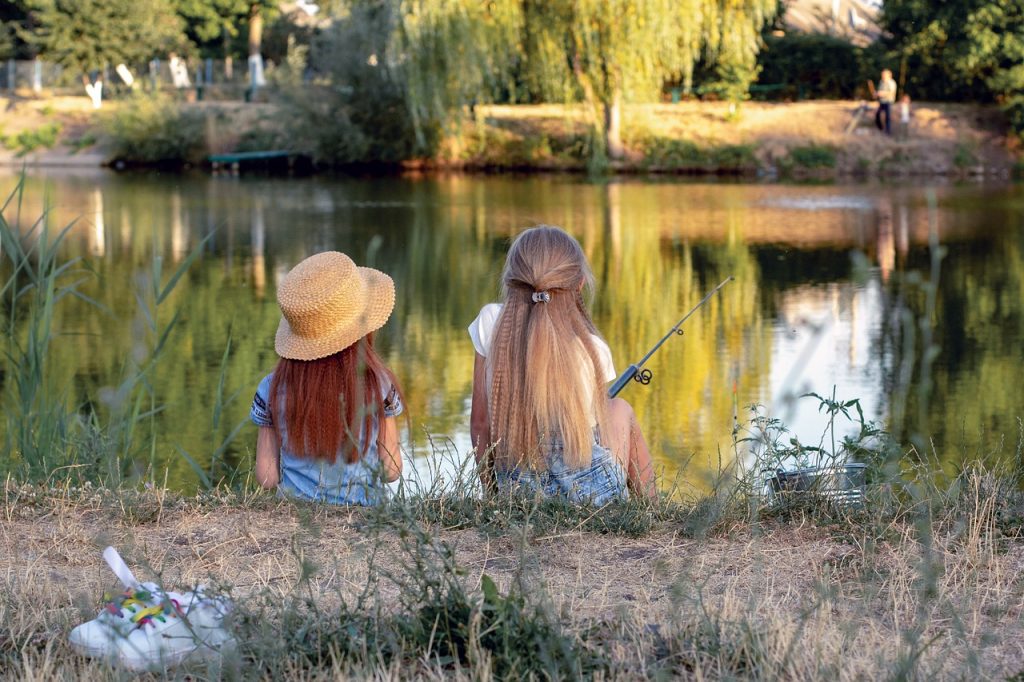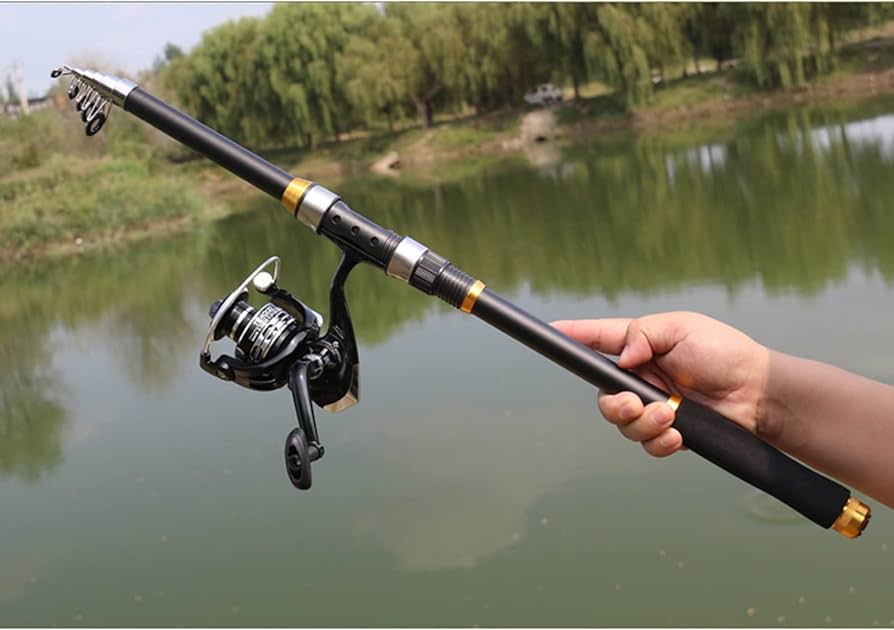(Photo from imordaf | pixabay.com)
Kayak fly fishing journey necessitates meticulous gear selection. First and foremost, the kayak itself serves as your mobile fishing platform. Opt for stable models with ample storage for fly boxes and gear. Next, consider fly fishing-specific accessories such as rod holders and paddle leashes to enhance convenience and safety.
Transitioning to fly fishing essentials, a versatile fly rod, and reel combo is indispensable. For kayak anglers, compact setups that balance performance and portability are ideal. Moreover, invest in quality fly lines tailored for diverse water conditions, ensuring seamless casts and presentations.
Furthermore, don’t overlook personal gear. Protective clothing, like breathable waders and waterproof jackets, shields against the elements. Additionally, polarized sunglasses enhance visibility, aiding in spotting elusive fish beneath the water’s surface.
Navigating Techniques: Fly Fishing Mastery in Kayaks
Marrying the art of fly fishing with kayaking demands adept techniques. Begin with mastering the basic fly-casting strokes. Given the confined space of a kayak, precision and control are paramount. Practice casts that minimize backswing while maximizing line control, ensuring efficient fly presentation.
Transitioning from casting to positioning, strategic kayak placement optimizes fly delivery. Utilize stealthy approaches, anchoring upwind of target zones to drift flies naturally. Additionally, hone your mending skills, manipulating lines to maintain a drag-free drift and enticing presentation.
Moreover, adaptability remains key. As you encounter varied water bodies, from tranquil lakes to meandering rivers, tailor your techniques accordingly. Embrace continuous learning, experimenting with new casts and strategies, and refining your kayak fly fishing prowess.
Prime Fishing Spots: Unlocking Kayak Fly Fishing Paradises
Identifying prime fishing locales amplifies kayak fly fishing success. Research local fisheries, pinpointing waters known for abundant trout, bass, or panfish populations. Engage with fellow anglers, tapping into community insights and discovering hidden gems.
Transitioning to on-water scouting, prioritize structure-rich areas. Fallen logs, submerged vegetation, and rocky outcrops serve as prime habitats, attracting diverse fish species. Additionally, explore transitional zones where shallow flats meet deeper channels, capitalizing on fish movement patterns.
Furthermore, embrace exploration. While renowned hotspots beckon, uncharted waters hold untapped potential. Safely navigate new terrains, armed with knowledge and a spirit of adventure, uncovering kayak fly fishing paradises awaiting discovery.
Safety Precautions: Ensuring a Secure Kayak Fly Fishing Experience
In the realm of kayak fly fishing, safety should never be an afterthought. Prioritize flotation devices, ensuring every angler aboard has a well-fitted life vest. Given the intricacies of fly fishing, where anglers often stand or lean over, stable kayaks with wide beams provide added security against capsizing.
Transitioning to weather considerations, always monitor forecasts before venturing out. Sudden storms can pose significant risks on open waters. Equip kayaks with essential safety gear like whistles, signaling mirrors, and first-aid kits. Furthermore, maintain regular communication with fellow anglers or loved ones, updating them on your location and itinerary.
Moreover, never underestimate the power of preparation. Familiarize yourself with basic kayak rescue techniques, ensuring readiness in case of emergencies. Regularly inspect kayaks for wear and tear, addressing any issues promptly. Embrace a safety-first mindset, ensuring each kayak fly fishing expedition prioritizes well-being above all.
Environmental Respect: Practicing Responsible Kayak Fly Fishing
Kayak fly fishing intertwines anglers with delicate aquatic ecosystems. Adopting responsible practices ensures these environments thrive for generations to come. Avoid disturbing aquatic vegetation, as these serve as crucial habitats for aquatic life. Practice catch-and-release, minimizing impact on fish populations.
Transitioning to waste management, always carry a designated trash bag onboard. Properly dispose of any litter, ensuring no debris ends up in the water. Additionally, be mindful of sunscreen and insect repellent usage, opting for eco-friendly alternatives that minimize harm to aquatic life.
Furthermore, engage in conservation efforts. Volunteer for local clean-up initiatives or support organizations dedicated to preserving aquatic ecosystems. By fostering a culture of environmental respect, kayak fly fishing becomes a conduit for positive change, nurturing the waters we cherish.
Choosing the Right Gear: Essentials for Kayak Fly Fishing
In the intricate world of kayak fly fishing, gear selection stands paramount. Begin with the basics: a well-balanced fly rod, preferably in a shorter length to maneuver within the confines of a kayak. Pair this with a reliable fly reel, ensuring smooth line retrieval even amidst challenging conditions.
Transitioning to fly lines, opt for weight-forward designs suitable for varied casting scenarios. Leaders and tippets should match the targeted fish species and water clarity. Lastly, ensure you have a compact yet comprehensive fly box, stocked with patterns mimicking local aquatic insects and baitfish.
Moreover, invest in quality accessories. Polarized sunglasses enhance visibility, aiding in spotting fish and underwater structures. A reliable anchor system ensures stability during casting, especially in currents. Prioritize lightweight, waterproof storage solutions for keeping essential gear close at hand.
Strategic Spots: Identifying Prime Kayak Fly Fishing Locations
Location can make or break a kayak fly fishing expedition. Research local waters, focusing on areas known for abundant aquatic life. River confluences, where currents bring nutrients and fish congregate, often prove fruitful. Similarly, shallow flats near drop-offs or underwater structures are prime feeding grounds.
Transitioning from general areas to specific zones, pay attention to underwater topography. Rocky outcrops, submerged logs, and weed beds serve as natural habitats, attracting various fish species. Consider local knowledge or engage with experienced anglers to uncover hidden gems.
Moreover, adaptability is key. Seasonal changes influence fish behavior and location preferences. Stay informed about migration patterns, spawning seasons, and water temperature fluctuations. By staying attuned to nature’s rhythms, anglers can maximize their chances of a successful catch.
Techniques and Tactics: Mastering the Art of Kayak Fly Fishing
Beyond gear and location, technique reigns supreme in kayak fly fishing. Start with casting fundamentals, practicing both accuracy and distance. Given the proximity to water, mastering the roll cast becomes invaluable for tight spaces.
Transitioning to presentation, understand the nuances of fly retrieval. Varying speeds, pauses, and depths can entice even the most cautious fish. Experiment with different fly patterns, adapting to the prevalent hatch or baitfish activity.
Moreover, embrace continuous learning. Attend workshops, watch instructional videos, or seek mentorship to refine skills. Kayak-specific techniques, such as paddling while casting or setting the hook without capsizing, further enhance the angling experience.
Safety Precautions: Prioritizing Well-being on the Waters
While the thrill of the catch is enticing, safety should always remain paramount in kayak fly fishing. Begin with personal safety equipment: a well-fitted PFD (Personal Flotation Device) is non-negotiable. Ensure it allows for unrestricted movement, especially during casting and retrieval.
Transitioning to kayak modifications, consider adding visibility aids like flags or lights, particularly if fishing in high-traffic areas. Reflective tape on your kayak enhances nighttime visibility. Moreover, always inform someone about your fishing plans, detailing your chosen location and expected return time.
Furthermore, familiarize yourself with local regulations and restrictions. Some areas may have specific guidelines about kayak fishing, designated launch points, or restricted zones. Respect these rules, not just for legal compliance but also to ensure the preservation of sensitive ecosystems.
Community Engagement: Networking and Conservation in Kayak Fly Fishing
Kayak fly fishing isn’t just a solitary pursuit; it’s a vibrant community. Engage with local clubs or online forums to share experiences, exchange tips, and discover new fishing spots. These communities often organize group outings, workshops, and conservation initiatives.
Transitioning from personal growth to collective responsibility, recognize the importance of sustainable practices. Practicing catch-and-release, minimizing impact on aquatic habitats, and participating in clean-up events foster a culture of responsible angling. Remember, the health of our waters today determines the fishing experiences of future generations.
Moreover, consider mentoring newcomers. Sharing knowledge, offering guidance, and introducing others to the joys of kayak fly fishing not only enriches the community but also ensures the sport’s longevity.
Conclusion: Navigating the Waters of Kayak Fly Fishing with Grace and Respect
In the grand tapestry of angling adventures, kayak fly fishing stands out, blending skill with serenity and nature’s bounty. As anglers navigate the waters, each journey becomes a symphony of casting, patience, and anticipation. Through gear mastery, strategic planning, safety vigilance, community engagement, and deep-rooted respect for the environment, the essence of kayak fly fishing shines brightly, beckoning all to embrace its beauty and embrace its call.
FREQUENTLY ASKED QUESTIONS
- What gear is essential for kayak fly fishing?
- Dive into the article to explore the must-have gear for a successful kayak fly fishing expedition.
- Are there specific tips for beginners in kayak fly fishing?
- Absolutely! The article provides expert tips tailored for those new to the world of kayak fly fishing.
- Where are the prime spots for kayak fly fishing adventures?
- Discover top locations and spots recommended for kayak fly fishing enthusiasts in the comprehensive guide.
- How can I ensure safety during kayak fly fishing?
- Safety is paramount. Learn essential safety measures and precautions outlined in the article for a secure fishing experience.
- Is kayak fly fishing suitable for all skill levels?
- Whether you’re a novice or seasoned angler, the article offers insights and techniques suitable for every skill level in kayak fly fishing.
Additional Resources:
1. Kayak fly fishing – https://www.flyfisherman.com/editorial/fly-fishing-kayaks/452040
2. Migration patterns – https://en.wikipedia.org/wiki/Fish_migration
3. Spawning seasons – https://en.wikipedia.org/wiki/Spawn_(biology)
4. Water temperature fluctuations – https://waterworkplumbing.com/fluctuating-water-temperatures/#:~:text=If%20your%20water%20temperature%20fluctuates,valve%20might%20be%20to%20blame.&text=Your%20pressure%2Dbalancing%20valves%20open,a%20drop%20in%20water%20pressure.
5. Fly fishing expedition – https://www.yellowdogflyfishing.com/blogs/back-stage-pass/the-8-best-guided-fly-fishing-trips-in-the-world
Check out our latest blog on Best DIY Kayak Fishing Mods: Customize Your Catch Machine


